

Did you know Metro Vancouver is home to the longest rapid transit system in Canada and one of the longest fully automated driverless systems in the world? So, if you’re concerned about travelling around Vancouver without a car, you can rest assured knowing Vancouver has a great public transportation system!
Most of the public transportation you can see in Vancouver is operated by TransLink. This includes the SkyTrain, SeaBus, West Coast Express, and many of the buses.
This guide will focus on Vancouver’s SkyTrain system and how to make the most of your travels around Metro Vancouver.

TransLink was created in 1998 back when it was still known as the Greater Vancouver Transportation Agency. The name TransLink was adopted in 1999 when the transportation authority took over many of the transportation-related responsibilities the provincial government previously held.
The SkyTrain, however, dates further back than TransLink itself. Built in 1985 in preparation for Expo 86, the Expo Line carried over 30 million passengers (about the population of Texas) in its first year.

Today, with over 141 million annual riders, the SkyTrain lines connect over 5 different cities in Metro Vancouver and connects to the Vancouver International Airport while the SeaBus ferries passengers across the water between downtown Vancouver and North Vancouver.
Many buses stop right outside SkyTrain stations for easy transfers to where you want to go.
The SkyTrain consists of three main lines: the Expo Line, the Millenium Line, and the Canada Line.
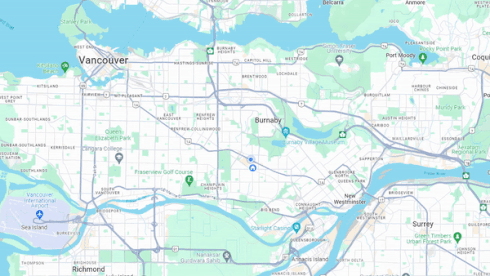
The Expo Line, the oldest and longest line of the three SkyTrain lines, connects Surrey to Burnaby and downtown Vancouver.
As an Alexander College student, the Expo Line should be the most familiar to you as both campuses are connected by the Expo Line.
The next line to be added to the SkyTrain system is the Millenium Line in 2002. With the addition of the Evergreen Extension in 2006, this line connects Coquitlam and North Burnaby to Vancouver.
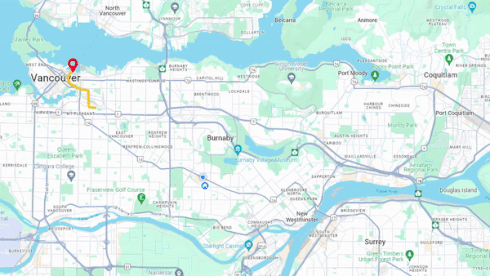

Last but not least, the Canada Line was added in 2009, which provides direct access to the Vancouver International Airport (YVR) and parts of Richmond from downtown Vancouver.
For those just arriving in Vancouver, the Canada Line may be the first experience they have when taking public transportation.
One important thing to note about the TransLink fare system is that you pay by the number of zones travelled. Metro Vancouver is split into 3 fare zones and the fare you pay depends on how many zones you cross during your trip.
 Detailed Map
Detailed Map
If you travel over the weekends and holidays or weekdays after 6:30pm, your entire trip is considered as 1-zone. These are very useful things to keep in mind if you want to save money!
TransLink offers a fare estimator on their website so you can double check how much your trip will cost before you go.

You can pay for your trip using any of the ticket vending machines located at any SkyTrain, SeaBus, and West Coast Express station or on buses. You can also use your Compass Card or certain forms of contactless card payment. Keep in mind that you cannot purchase a day pass on buses.
Introduced to Metro Vancouver in 2013 and fully implemented in 2015, the Compass Card is a transit card that lets people quickly tap into fare gates located in SkyTrain and SeaBus stations or Compass Card readers on buses.
You can check your balance and add value to your Compass Card through the Compass Card website or a ticket vending machine. You can set up your card to automatically reload value when the stored value on the card drops below a certain threshold on the website.
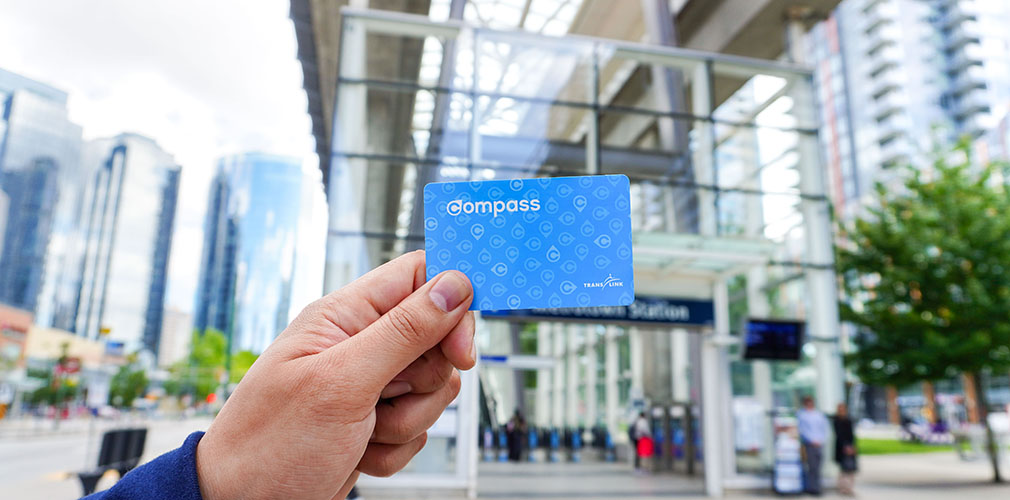
For those who frequently use public transportation to travel, monthly passes are also available for purchase. Looking for a day trip option? Day passes can also be purchased and loaded onto your Compass Card from the website or at a ticket machine.
Additionally, using a Compass Card to travel around Vancouver is cheaper than using cash or other forms of contactless payment, so maximize your savings by getting your own Compass Card from Compass Card vending machines located in SkyTrain, SeaBus and West Coast Express stations, or your local London Drugs.
Whether it’s transiting to school, work, or exploring Vancouver, it’s always best to plan your route to ensure you get to your destination without delays.

TransLink has its own Trip Planner which often gives you multiple options to get you from point A to point B. Similarly, Google Maps is also a handy tool to help plan your trips.
Both sites let you set a departure time or the time you want to arrive at your destination, so you’ll have lots of options when planning your trip! What’s more, either option will tell you if there is maintenance or delays on your trip so you can adjust your travel time accordingly.
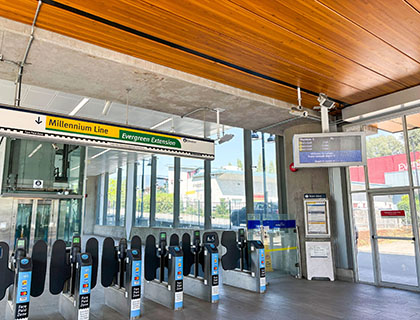
For those who prefer to prefer to plan on the go, Google Maps and TransLink’s Trip Planner are available on mobile devices as well as an assortment of trip planner apps like TransitDB for Android.
Keep an eye out for electronic signs on the platforms and stations that will tell you when the next train will arrive at the platform and where it’s heading. You don’t want to hop on the wrong train!

Those who are familiar with Vancouver’s weather know that the nickname ‘Raincouver’ exists for a reason! Check the weather forecast before you go and always bring an umbrella when possible.
The temperature difference between the daily highs and lows can also be significant, so make sure you layer up if you’re planning to be outside for most of the day.
Part of public transit is practicing good transit etiquette. Here are a list of things to keep in mind while you explore Vancouver through our SkyTrain system:
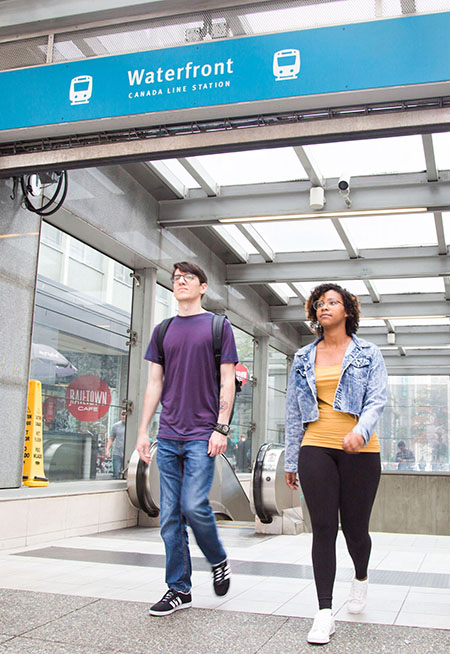
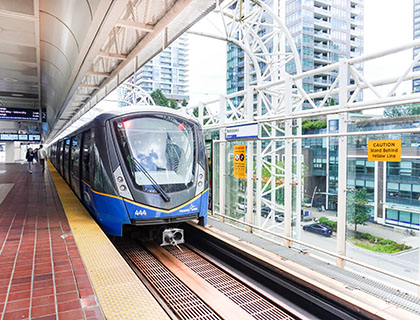
With over 50 stations and more on the way, you can expect the SkyTrain to be a staple of Vancouver transportation in the years to come. There are already plans to extend the SkyTrain lines to connect more areas of Surrey and even connect to the University of British Columbia (UBC)!
Outside of school life, Vancouver is a beautiful place to explore with its diverse neighbourhoods, great food, beautiful scenery, and local events. Regardless of what time of year it is, there’s always something to see and do in the city.
So, what are you waiting for? Hop on a SkyTrain and enjoy what Metro Vancouver has to offer!
International Students in VancouverIf you’re a current student at AC who loves to explore Vancouver, contact us at social@alexandercollege.ca and you may have a chance to be featured in a future blog and video.
Alexander College acknowledges that the land on which we usually gather is the traditional, ancestral and unceded territory of the Coast Salish peoples, including the territories of the xʷməθkwəy̓əm (Musqueam), Skwxwú7mesh (Squamish), and Səl̓ílwətaʔ/Selilwitulh (Tsleil-Waututh) Nations. We are grateful to have the opportunity to work in this territory.
Alexander College acknowledges that the land on which we usually gather is the traditional, ancestral and unceded territory of the Coast Salish peoples, including the territories of the xʷməθkwəy̓əm (Musqueam), Skwxwú7mesh (Squamish), and Səl̓ílwətaʔ/Selilwitulh (Tsleil-Waututh) Nations. We are grateful to have the opportunity to work in this territory.